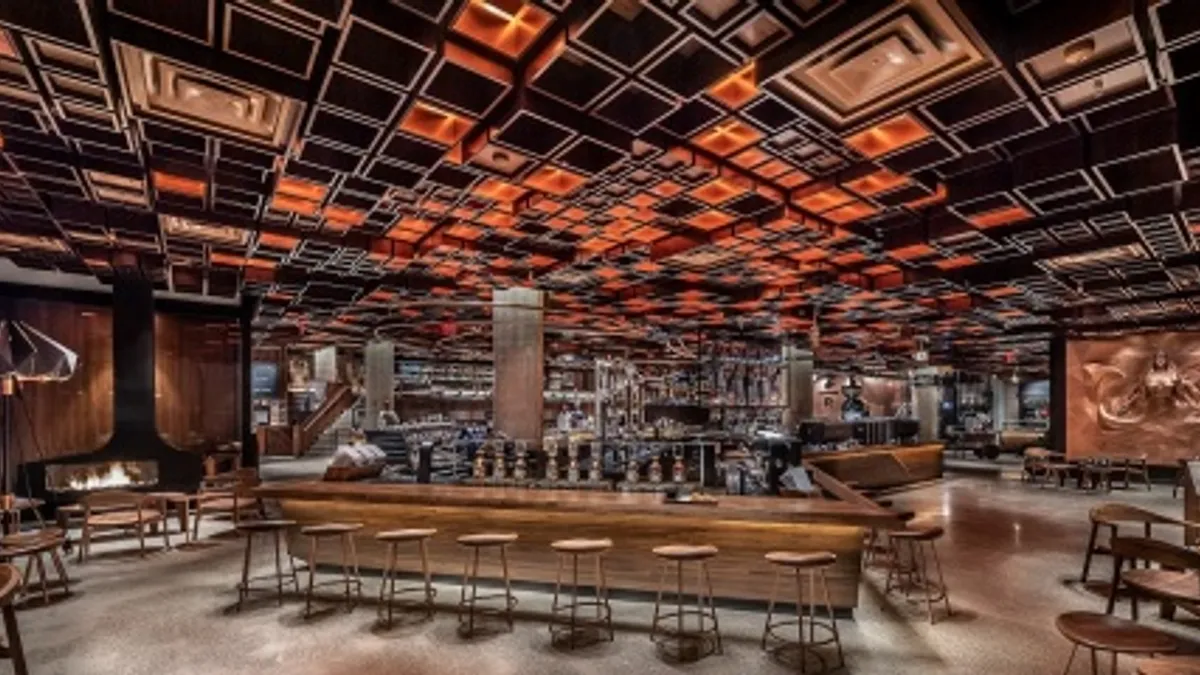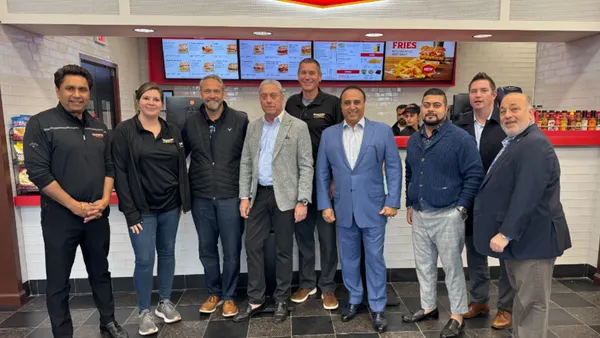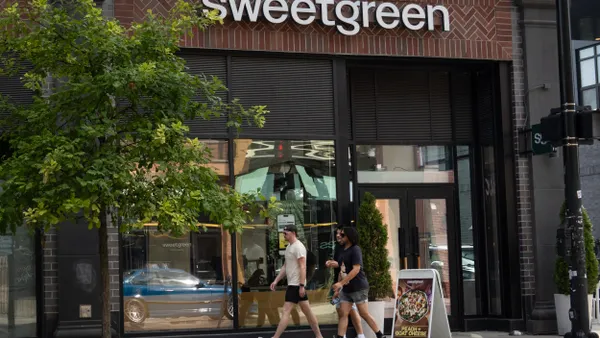Dive Brief:
- Ahead of its annual Investor Day event Thursday, Starbucks announced the opening of a Reserve Roastery location in New York, which is officially opening Dec. 14. This marks Starbucks' fourth roastery location — its second in the U.S. — behind Seattle, Shanghai and Milan. Future locations are planned for Tokyo and Chicago for 2019, according to a company release.
- The roastery spans nearly 23,000 square feet, and includes a working coffee roastery with small-batch roasting of single-origin coffees and blends called Starbucks Reserve.
- "We designed the Roastery as the pinnacle experience around all-things-coffee, and there is nothing else like it in the world. With premium coffees, teas, mixology and the iconic Milanese Princi Bakery, it serves as a Starbucks brand amplifier and a platform for future innovation," CEO Kevin Johnson said in the release.
Dive Insight:
There is an interesting dichotomy emerging in the restaurant industry right now: Chains are putting forth a lot of effort and investment behind in-store upgrades while off-premise occasions continue to grow. For example, Starbucks announced Thursday that it's aggressively expanding its delivery presence through a partnership with Uber Eats to meet the growing number of consumers who just want to stay home.
But the purpose of the company’s roastery locations are significantly different from speed or convenience. They're designed specifically to be experiential destinations, according to CNBC. This appears to be a savvy investment — Euromonitor International predicts experiential spending by consumers will hit $8 trillion by 2030.
At this new Reserve Roastery, consumers can sample coffee flights at the experience bar and explore the scoop bar, where consumers can take home bags of 14 rotating coffees from farms around the world. The format also includes the first Arriviamo Bar — a craft cocktail bar where mixologists serve drinks featuring coffee and tea. Each roastery also features a unique piece of art. In the New York location, this is a 10-foot, 2,000-pound copper siren created by Brooklyn artist Max Steiner, according to CNBC. These features on their own should, at the very least, generate curiosity-induced visits and digital-minded consumers hungry for Instagrammable food and locations.
The roastery also can leverage a desire for exclusivity, offering unique and innovative products such as the Nitro Apricot Cold Brew. This store could capture interest from millennials, who are increasingly interested in more experiential retail and are more likely to purchase products that offer a personal connection or sense of exclusivity.
There are plenty of intriguing components to this concept, but there are likely some challenges, also. This concept wouldn't work in a suburb like it does in Manhattan's swanky meatpacking district, so expansion will be limited and purposeful. Also, while such high-end concepts work well in a booming economy, how will they fare in a challenged economy? Nearly half of U.S. chief financial officers believe a recession is looming, for example. If that were to really happen, can Starbucks justify (or easily sell) a $23 cold brew with Veuve Clicquot champagne?
The company must like what it sees so far, with plans to expand to 30 roasteries globally. On the heels of Dunkin’s $100 million investment in its espresso-drink program and McDonald’s expansion of its espresso lineup and cold brew addition, there is no doubt the coffee wars are heating up. It will be tough to keep up with Starbucks, however, which also is expanding its cold beverage menu and will bring its Nitro cold brew to all of its stores in 2019. Perhaps the greatest advantage of the Reserved Roastery footprint is the fact it allows Starbucks to differentiate by showcasing its deep authority in the coffee space.









